Ep. 313 | The History of Taiwan (Part 4)
The history of Taiwan continues during the difficult decades of the Qing Dynasty. With Shi Lang's defeat of the Dongning Kingdom in 1683, Taiwan finally became part of China. But times were anything but peaceful on the island. The outcome of the Opium Wars had opened up treaty ports on Taiwan. Foreign trade ramped up quickly bringing with it all the positive and negative influences it had on the host country. The Manchu Qing authorities tried like crazy to establish control over the island.
But with the indigenous people and the inaccessible mountainous parts of the island, they were never able to assert their authority beyond the west coast cities. A number of bloody incidents go down when foreign ships find themselves shipwrecked off the Taiwan coast. Finally, a hero arises who is able to begin to institute reforms. Liu Mingchuan first fought the French in the Sino-French War and then became the first governor of Taiwan...but not for long. We'll close with the Treaty of Shimonoseki which leads to a sharp turn of events on the Ilha Formosa.
Listen On Your Favorite Podcast Player
Terms in Episode
| Pinyin/Term | Chinese | English/Meaning |
|---|---|---|
| Kāngxī | 康熙帝 | The third Qing Emperor. He reigned 1661-1722 |
| Yōngzhèng | 雍正帝 | Son of Kangxi, he reigned from 1722-1735 |
| Qiánlóng | 乾隆帝 | Qing Emperor who reigned 1735-1796 |
| Qīng | 清朝 | Last imperial dynasty of China 1644-1912 |
| Zhèng Chénggōng | 郑成功 | Born Tagawa Fukumatsu and Zhang Sen, Also known as Koxinga 国姓爷 Lord of the Royal Surname. He known in popular Chinese history as Zheng Chenggong (actual name was Zhu Chenggong (the royal Ming Zhu 朱. He lived 1624-1662, and is remembered as a Ming loyalist general who founded the Dongning Kingdom that lasted 1661-1683 |
| Jiāqìng Emperor | 嘉庆帝 | Qing emperor who reigned 1796-1820 |
| Dōngníng Kingdom | 东宁王国 | The Dongning Kingdom 1661-1683, led by the Zheng Family (first Zheng Chenggong, then Zheng Jing) |
| Ānpíng | 安平 | Former name of Táinán 台南, located on the southwest coast of Taiwan, this is where the earliest recorded history began with the arrival of the Dutch in 1624. Tainan was where the Dutch built Fort Provintia and Fort Zeelandia |
| Gāoxióng | 高雄 | The city of Kaohsiung on the southwest coast of Taiwan |
| Jīlóng | 基隆 | Officially known as Keelung City. It's a major port city situated in the northeastern part of Taiwan. The city is a part of the Taipei–Keelung metropolitan area, along with its neighbors, New Taipei City and Taipei. |
| Dànshuǐ | 淡水 | A seaside district in New Taipei, named after the Tamsui River; the name means "fresh water" |
| Fújiànese | 福建人 | Someone from Fujian Province, also known as Hokkien or Hoklo |
| Zhāngzhōu | 漳州 | City on the southern coast of Fujian |
| Xiàmén | 厦门 | City in southern Fujian, also known as Amoy |
| Quánzhōu | 泉州 | City in southern Fujian adjacent to Xiamen |
| Hakka | 客家 | A Han Chinese subgroup whose ancestral homes are chiefly in the Hakka-speaking provincial areas of Guangdong, Fujian, Jiangxi, Guangxi, Sichuan, Hunan, Zhejiang, Hainan, Guizhou in China, as well as in parts of Taiwan. Unlike other Han Chinese subgroups, the Hakkas are not named after a geographical region in China. The word Hakka or "guest families" is Cantonese in origin and originally refers to the Northern Chinese refugees fleeing social unrest, upheaval and invasions in northern parts of China who migrated to the south. |
| Méixiàn | 梅县 | Méi County in Eastern Guangdong. The center of Hakka Culture in China |
| Guǎngdōng | 广东 | Province in southern China |
| Cháozhōu | 潮州 | City in Southeast Guangdong. Also the name for a region consisting of the cities of Chaozhou, Shantou and Jieyang. The people are known as Teochews |
| Pénghú | 澎湖 | Also popularly known as the Pescadores Islands. This is an archipeligo of 90 islands in the Taiwan Strait covering an area of 141 square km. The largest city is Magong |
| Sòng | 宋朝 | The Song Dynasty, founded by Zhao Kuangyin, that lasted 960-1279 |
| Míng | 明朝 | The Ming Dynasty, founded by Zhu Yuanzhang. It lasted 1368-1644 |
| Běnshěngrén | 本省人 | In Taiwan these are the people born and raised in Taiwan and who lived there prior to the Chinese Civil War |
| Wàishěngrén | 外省人 | A name ascribed to the Chinese who migrated to Taiwan as a result of the Communist victory in the Chinese Civil War in 1949 |
| Lín Shuǎngwén Rebellion | 林爽文事件 | 1786-1788, major anti-Qing rebellion caused by persecution of the secret Tiandihui (heaven & Earth) Society. It spiraled out of control and resulted in much bloodshed and destruction |
| Zhōushān | 舟山 | A group of islands off the coast of Ningbo, Zhejuiang Province |
| Dà’ān District | 大安区 | A coastal suburban district in Taichung. It lies between the Dajia river and the Da-an river |
| Táizhōng | 台中 | City on the west coast of Taiwan that also served as the provincial capital |
| Battle of Níngbō | March 10, 1842, a battle that saw the Qing Navy go down in defeat after trying to seize back Ningbo from the British | |
| Dàoguāng Emperor | 道光帝 | Qing Emperor who had the misfortune to reign between 1820-1850 |
| Shàntóu | 汕头 | A port city just south of Chaozhou (see above) |
| Yíngkǒu | 營口 | a port on the Liáodōng Bay halfway between Dàlián 大连 and Shěnyáng 沈阳 |
| Kěndīng National Park | 垦丁国家公园 | Kenting National Park is a national park located on the Hengchun Peninsula of Pingtung County, Taiwan, covering Hengchun, Checheng, and Manzhou Townships. Established on 1 January 1984, it is Taiwan's oldest and the southernmost national park on the main island, covering the southernmost area of the Taiwan island along Bashi Channel. |
| Páiwān | 排湾族 | An indigenous people and language. In 2014, the Paiwan numbered 96,334. This was approximately 17.8% of Taiwan's total indigenous population, making them the second-largest indigenous group. They fought many skirmishes against foreigners in the 18th and 19th century |
| Mǔdān Shè Shìjiàn | 牡丹社事件 | Mǔdān Incident of December 1871 that saw the massacre of 54 Ryukyuan sailors in Qing-era Taiwan who wandered into the central part of Taiwan after their ship shipwrecked off of Taiwan's southeastern coast |
| Viceroy of Liǎngjiāng | 两江总督 | The Viceroy of Liangjiang or Viceroy of the Two Jiangs (also: the Governor-General of the Two Yangtze Provinces and Surrounding Areas Overseeing Military Affairs, Provisions and Funds, Manager of Waterways, Director of Civil Affairs, was one of eight regional Viceroys in China proper during the Qing dynasty. Liǎngjiāng was comprised of the territories of Jiāngsū, Ānhuī and Jiāngxī. |
| Shěn Bǎozhēn | 沈葆桢 | Viceroy of Liangjiang from 1875-1879. He began some reforms on Taiwan |
| Gāoshān | 高山 | Literally means tall mountains. So the Gaoshan people were those aboriginals who resided in the mountainous two thirds of the island |
| Bātōngguān Trail | 八通关古道 | Two trails crossing the Central Mountain Range from Zhushan, Nantou to Yuli, Hualien in Taiwan. The first iteration of the trail was built in the Qing Dynasty and was abandoned; a second was built in the Japanese era. Both were built for the government to control the indigenous population living in the mountains. Though the two trails rarely overlap, they are often referred to by the same name. |
| Diàoyú | 钓鱼岛 | Known as the Senkaku Islands, they are administered by Japan and the subject of territorial disputes between Japan, China ansd Taiwan |
| Liú Míngchuán | 刘铭传 | Taiwan's first governor during the Qing. He served from 1884-1891. Besides his past military service, Liu is remembered for his efforts in modernizing Taiwan during his tenure as governor, and several institutions have been given his name, including Ming Chuan University in Taipei. |
| Tàipíng Rebellion | 太平天国 | December 1850 to August 1864, a terrible civil war and rebellion in China that pitted the Taiping rebels and their leader, Hong Xiuquan, against the Qing Dynasty |
| Ānhuī | 安徽 | Province in China adjacent to Zhejiang, Jiangsu, Jiangxi, Henan and Hubei, pretty central to almost everything that happened in China history |
| Héféi | 合肥 | Capital of Anhui |
| Zēng Guófān | 曾国藩 | 1811-1872, statesman and military general of the late Qing dynasty. He is best known for raising and organizing the Xiang Army to aid the Qing military in suppressing the Taiping Rebellion and restoring the stability of the Qing Empire. |
| Lǐ Hóngzhāng | 李鸿章 | 1823-1901, Chinese politician, general and diplomat of the late Qing dynasty. With his Huai Army, he quelled several major rebellions and served in important positions in the Qing imperial court, including the Viceroy of Zhili, Huguang and Liangguang. He was best known in the West for his generally pro-modern stance and as the Qing Dynasty's chief negotiator with foreign powers |
| Huái Army | 淮军 | Army created in October 1861 by Li Hongzhang, also called the Anhui Army |
| Shī Láng | 施琅 | Although he was best known in the West for his generally pro-modern stance and importance as a negotiator, |
| Yuè Fēi | 岳飞 | 1103-1142, Southern Song military general and a national hero of China, known for leading forces against the Jurchen-ruled Jin dynasty in northern China. Because of his warlike-stance, he was put to death by the Southern Song government in 1142 under a concocted charge, after a negotiated peace was achieved with the Jurchens. The Yue Fei Temple is in Hangzhou. A great place to visit next time you're there |
| Huán Wǒ Hé Shān | 还我河山 | Return my rivers and mountains, meaning that part of north China occupied by the Jurchen Jin |
| Cāngtiān a, huán wǒde Táiwān | 苍天啊,还我的台湾! | Oh Heaven, Give me back my Taiwan |
| Wǔyí Mountains | 武夷山 | Mountain chain in northern Fujian, famous for its scenic beauty and for the tea gardens growing on the cliffs and in the mountains |
| Lùgú Township | 鹿谷乡 | A rural township located in the southwest of Nantou County, Taiwan |
| Nántóu County | 南投县 | The second largest county of Taiwan, located in the central part of the island. Nantou is also the only non-coastal county in Taiwan. Its name derives from the Hoanya Taiwanese aboriginal word Ramtau |
| Dòngdǐng Tea | 冻顶茶 | The first famous tea of Taiwan, grown in Lugu Township |
| Lǐ Chūnshēng | 李春生 | 1838-1924, One of the "Fathers" of Taiwan's tea industry, along with John Dodd. He had a massive impact on the scaling up of Taiwan's tea industry and turning tea into Taiwan's biggest and renowned export |











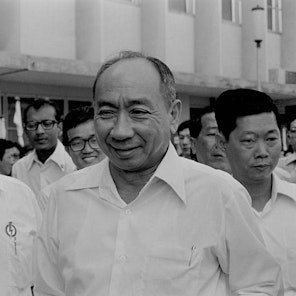

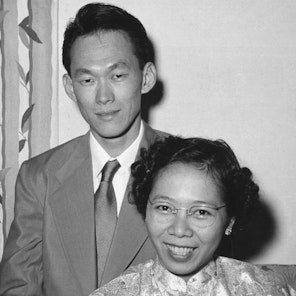
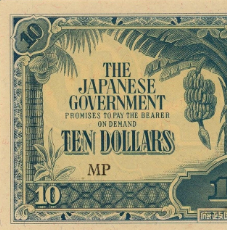
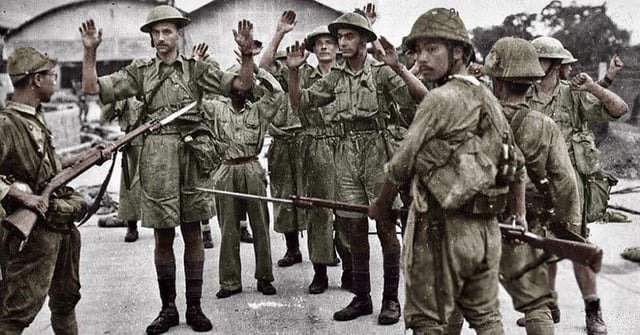
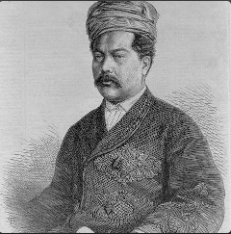
Former BBC reporter and master jade carver Andrew Shaw is back. What an informative interview this one turned out to be!